Peterman
Construction and Destruction
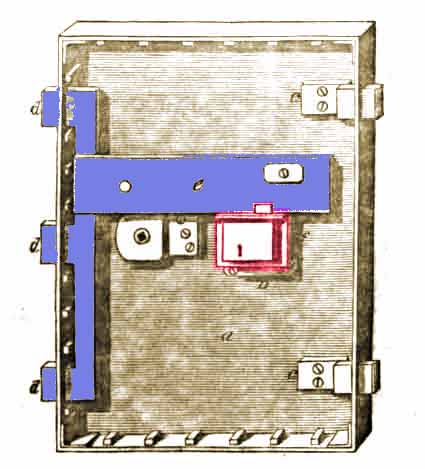 |
|
||
| The sliding boltwork (coloured blue) is operated by an external handle and secures the door in the frame of the safe , which in turn is held in the locked position by the bolt of the keylock shown (coloured red), and which, when unlocked with the key, would allow the bolts to be withdrawn by means of the handle and the door then opened. To force open such a safe, the bolt of the lock has to be displaced by drilling and punching, or by removing the lock entirely. The most crude but effective means of accomplishing this would be to place a small charge of high explosive into the lock via the keyhole. (picture right). If done correctly the lock would disintigrate without causing any other distortion of the boltwork and the handle would operate as normal. For gunpowder (blackpowder) to be charged into a mechanism such as this would require that a hole be drilled through the door plate. In the early days this would have been done using either a belly brace or ratchet drill. |
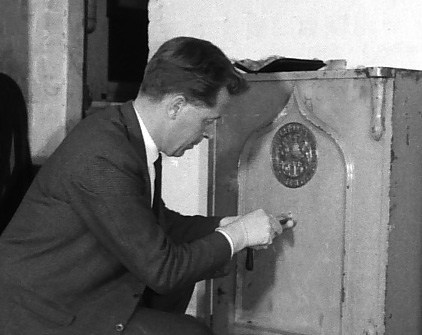 |
||
This was not always necessary however as in the early days the keylocks were capacious enough to accept black powder in quantities sufficient to remove the lock cap and bolt allowing the boltwork to be withdrawn.
This
led to the patenting of a ‘powder-proof lock’ by Thomas
Milner in 1854 which was designed in such a way as to allow only
the necessary movement of the key, levers, and bolt, the remaining
space being blocked by a casting within the lock. They even went
further and filled the voids within the lockcase with wooden inserts
which effectively prevented the insertion of black powder into the
lockcase. |
|||
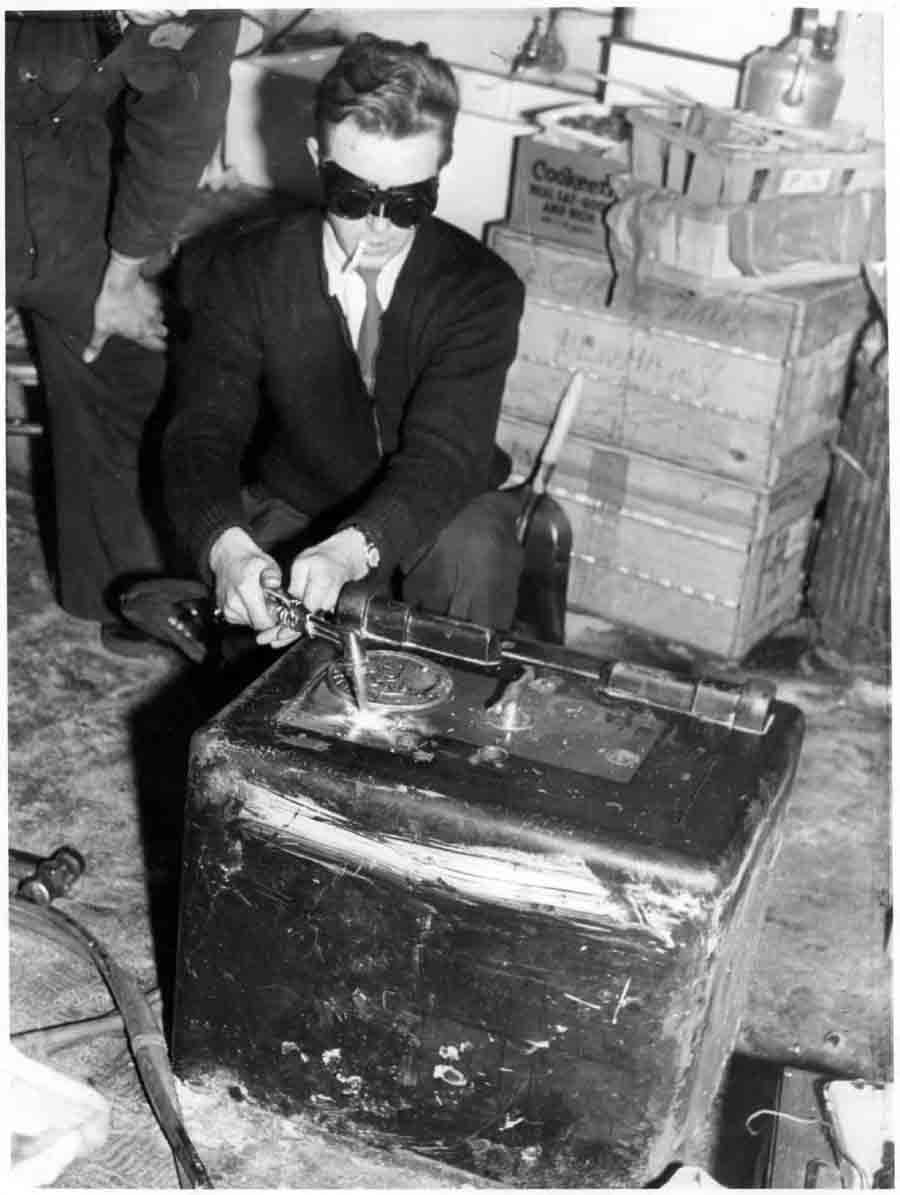 |
When high explosives came into commercial use at the turn of the Century, it was inevitable that such powerful materials would fall into criminal hands. These pliable gelignites were simply packed through the keyholes as far into the lock as possible followed by an electric or fuse detonator. Depending on the size of the charge, which for the relatively unskilled was dependent on the capacity of the lock, either the lockwould be cleanly removed allowing the door to be opened in the normal fashion,or if excessive, would so distort the mechanism as to render it fast.
|
||
|
This model, the Grade 3, was installed in most Co-operative
branches throughout Scotland and also, to a lesser degree in the ABC
Cinema circuit and Glasgow Corporation Baths Department premises. Not
one was ever successfully blown open. As the door plate of the Grade3
was drill resistant it was necessary to cut out a small rivet with oxy-acetylene
to release the relocker. (see above) Because of the strength of the
construction it was usually possible to repair the doors to their original
condition. |
|||
|
As
the above would indicate, the safe-blower did not have unlimited
success. From the newspapers in the post-war years where safe-blowings
were being headlined on an average of three times a week in Glasgow
alone, it would be easy to misconstrue that all safes were easy
prey to the cracksman. Actually the majority of safes in commercial
use – excluding banks – were only of fire-resisting quality.
At the turn of the century in the Birmingham area alone there were
as many as 40 small firms making such safes, and which, through
a combination of ignorance and dubious salesmanship, were being
entrusted with overnight cash holdings far in excess of their potential
capacity to resist. |
|||
|
There
were of course many quality safemakers like Ratner whose thief-resistant
cash safes were in use in banks, jewellers, and pawnbrokers, where
the threat from safe-breakers was anticipated, and where such resistance
would also be a requirement of insurers. Another was the Milner
Safe Company who, in the London Trades Directory of 1900 claimed
to be the largest safe maker in the world. Other well known
makers were Tann, Chubb, Hobbs Hart, and Chatwood, all manufacturing
safes up to the highest level of resistance of the day. On thief-resisting qualities,the lockcase containing the lock and boltwork was formed from an angle-iron flange frame which was heavily riveted to the door plate as shown in the drawing on the right.
|
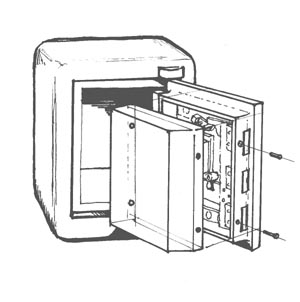 |
||
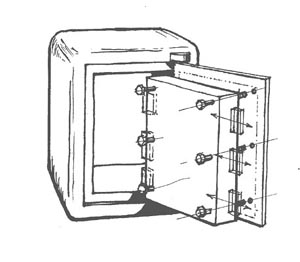 |
In this case
the fire chamber was attached separately to the lockcase. It was only
in the latter form that anti-explosive devices could be successfully
applied as everything except the fire chamber would remain intact
in the event of a blowing.
The safe bodies as illustrated are of 12 corner bend construction. This would be mild steel from ¼” to ½” maximum thickness and which, apart from the back plate, was formed from a single sheet of steel. The technique of bending heavy plate did not come into general practice until the late 1800’s. Prior to this, the bodies were mainly fabricated from wrought iron and all the joints were riveted or dovetailed. (Chatwood actually dovetailed ½” steel plates to form the outer bodies of such safes as their List 2a Quality).
|
||